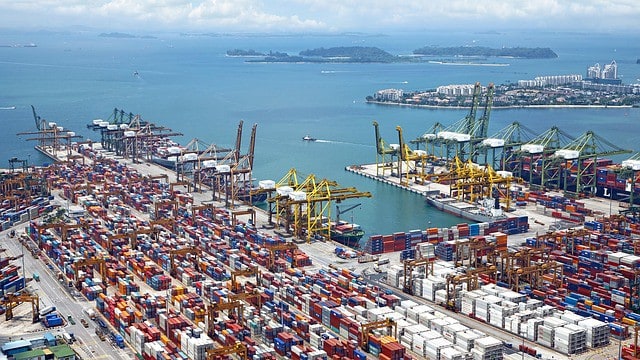The Port of Vancouver is the busiest port in Canada. Last year, it was also the fourth-busiest port in both North and South America. Globally, it’s in the top 30. Every year, it handles more than 130 million metric tons of cargo worth more than $200 billion.
Bottom line: it’s big. Buying stock in Westshore Terminals Investment (TSX:WTE) lets everyday investors get in on the action.
Own one of Canada’s biggest export terminals
Operating since 1970, Westshore operates Canada’s busiest coal-export terminal, which is located in the Port of Vancouver. Each year, it exports more than 30 million tonnes of coal, derived from major mines in both the U.S. and Canada, including the well-known Powder River Basin in Montana and Wyoming.
Because the terminal is located in the Port of Vancouver, Westshore must have explicit permission to conduct its business. Fortunately, for decades, it’s had a long-term contract with the Canadian government to operate and manage the terminal. The contract is renewable, and Westshore has never had an issue extending its concessions.
Having an exclusive concession is a huge advantage in what otherwise could be a competitive market. Space considerations limit the number of terminals that can be built and operated. That means whoever has the rights to a specific terminal has a near monopoly on that specific good. For Westshore, it’s mainly coal.
Since 1970, the company has shipped more than 800 million tonnes of coal to more than 20 countries. The Westshore terminal is 133 acres, can store up to two million tonnes of coal at any one time, and has the capacity to load 7,000 tonnes every hour. And with new assets about to come online, Westshore’s competitive position is about the be solidified.
New infrastructure will change the game
Westshore has consistently reinvested its cash flow into improving its competitive advantages. While it does own an exclusive concession to operate its terminal, providing customers with the latest technology can improve throughput and lower costs, helping all parties involved.
For example, since 1970, Westshore has increased its export capacity from just six million tonnes of coal annually to more than 30 million tonnes today. Most of that added capacity is a result of its ongoing infrastructure investments. In recent years alone, it’s added seven kilometres of high-speed conveyors, four kilometres of rail causeways, two deep sea berths, and four stacker reclaimers.
This year, a major terminal upgrade is set to enter service, revitalizing both the company and its customers.
In 2013, Westshore budgeted $275 million over a five-year period to replace old equipment and modernize its terminal capabilities. Last year, it spent its final tranche ($41 million), completing the upgrade under budget and on time. Armed with long-term contracts from customers like Teck Resources and Cloud Peak Energy, Westshore is prepared for the future of coal exports.
Currently, shares trade at just 14 times earnings with a 3% dividend yield. While the future of the company will hinge on long-term global demand and pricing for coal, Westshore provides the most direct way to invest in Canada’s export industry.










